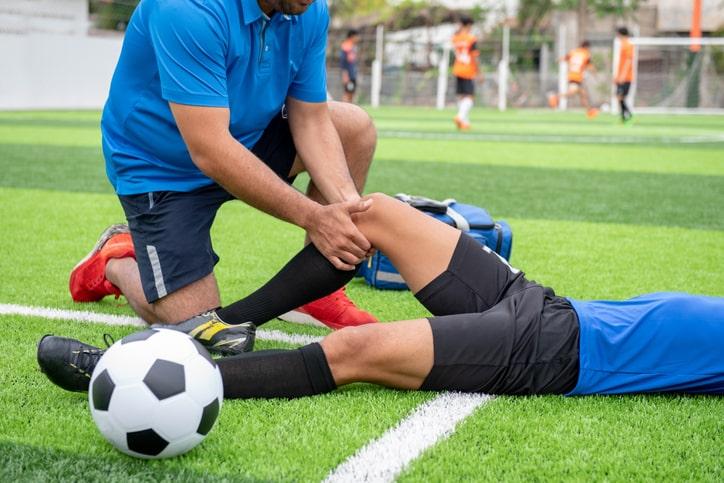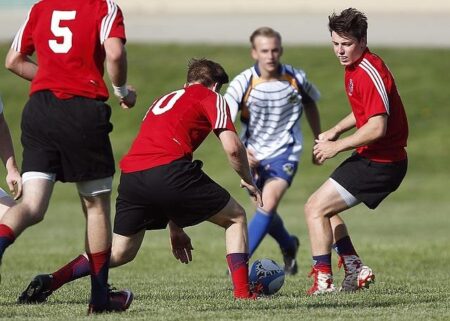When to See a Doctor for a Sports Injury: Signs You Shouldn’t Ignore – Riverside Health System
Sports injuries are an unfortunate yet common part of an active lifestyle, affecting athletes and weekend warriors alike. While many minor aches and strains can be managed with rest and home care, certain symptoms signal the need for immediate professional evaluation. Riverside Health System emphasizes the importance of recognizing these critical signs to prevent complications and ensure a swift, safe recovery. This article outlines key indicators that should prompt anyone with a sports-related injury to seek medical attention without delay.
Recognizing Severe Pain and Swelling That Require Immediate Medical Attention
Severe pain and swelling following a sports injury are clear indicators that you should seek professional medical evaluation without delay. These symptoms often signal underlying damage such as fractures, torn ligaments, or serious sprains that cannot be effectively treated with rest or over-the-counter remedies alone. Ignoring intense discomfort and rapid swelling may lead to prolonged recovery times or even permanent impairment, especially if blood flow or nerves are compromised.
Watch closely for associated symptoms that demand urgent care, including:
- Sudden inability to bear weight or use the injured limb
- Noticeable deformity or misalignment of joints
- Numbness, tingling, or coldness around the injury site
- Swelling that continues to expand despite ice and elevation
| Warning Sign | Immediate Action |
|---|---|
| Severe, unrelenting pain | Seek emergency care |
| Rapid swelling within hours | Visit urgent care or ER |
| Loss of sensation or movement | Call 911 or emergency services |
Understanding When Limited Mobility Signals a Serious Injury
Limited mobility following a sports injury can sometimes be dismissed as a routine strain or soreness, but there are critical signs that signal a more serious underlying issue. When movement is restricted beyond what would be expected from a mild injury, it may indicate damage such as a ligament tear, fracture, or joint dislocation. Pay close attention if you experience persistent stiffness, inability to move the affected limb fully, or if motion triggers sharp, intolerable pain. These symptoms not only hinder daily activities but also suggest that professional evaluation is essential to prevent long-term complications.
Consulting a healthcare provider promptly can guide proper diagnostics and treatment plans. Prioritize care if you notice any of the following warning signs:
- Complete loss of movement in a joint or limb
- Visible deformity or swelling that worsens over time
- Numbness or tingling sensations accompanying limited motion
- Inability to bear weight or use the affected area
- Symptoms that persist beyond 48 hours without improvement
| Symptom | Possible Injury | Recommended Action |
|---|---|---|
| Severe pain with joint swelling | Ligament tear or sprain | Seek immediate medical assessment |
| Restricted motion lasting over 48 hours | Potential fracture or dislocation | Schedule urgent imaging evaluation |
| Numbness or tingling | Nerve involvement or compression | Consult a specialist promptly |
Identifying Signs of Infection and Complications Post-Injury
After a sports injury, it’s crucial to stay vigilant for any symptoms indicating infection or other complications. Watch closely for persistent swelling that worsens instead of improving, or any redness and warmth around the injury site. These signs often point toward an underlying infection that requires medical attention. Additionally, the presence of pus or unusual discharge is a clear signal you shouldn’t ignore. Fever, chills, and unexplained fatigue can further indicate that your body is fighting an infection, making immediate consultation with a healthcare professional necessary.
Complications aren’t limited to infections alone. Pay careful attention to changes in sensation or movement, such as numbness, tingling, or increasing pain that limits mobility. These can suggest nerve involvement or worsening tissue damage. Use the table below as a quick reference for when to seek urgent care:
| Symptom | Possible Issue | Recommended Action |
|---|---|---|
| Increasing redness & warmth | Infection | See doctor within 24 hours |
| Fever & chills | Systemic infection | Seek emergency care |
| Numbness or tingling | Nerve injury | Consult specialist promptly |
| Severe, worsening pain | Compartment syndrome or deep injury | Go to ER immediately |
Guidance on When at-Home Care Is Insufficient and Professional Evaluation Is Necessary
Knowing when to move beyond at-home care is crucial for preventing long-term complications. If you experience persistent swelling or intense pain that doesn’t improve with rest, ice, compression, and elevation within 48 hours, it’s a clear sign that professional evaluation is needed. Additionally, any injury that results in an inability to bear weight or move the affected limb should prompt immediate medical attention. Symptoms such as numbness, tingling, or muscle weakness may indicate nerve involvement and require urgent assessment by a healthcare provider.
Keep in mind these key warning signs that should not be ignored and warrant a visit to a healthcare professional:
- Visible deformities or unusual joint angles post-injury
- Severe bruising spreading quickly beyond the injury site
- Open wounds or bone protrusion
- Fever accompanying localized pain and swelling
- Recurring instability or “giving way” sensation during activity
| Symptom | Possible Issue | Recommended Action |
|---|---|---|
| Persistent swelling over 2 days | Ligament tear or fracture | Consult a physician immediately |
| Numbness or tingling | Nerve involvement | Seek urgent medical evaluation |
| Inability to move joint | Dislocation or severe sprain | Visit an emergency room |
The Way Forward
Recognizing when a sports injury requires professional medical attention is crucial to ensuring a safe and effective recovery. Riverside Health System urges athletes and active individuals to stay vigilant for warning signs such as severe pain, swelling, loss of function, or symptoms that worsen over time. Prompt evaluation by a healthcare provider can prevent complications and get you back in the game faster. Remember, when it comes to sports injuries, it’s better to err on the side of caution and seek expert care without delay.





